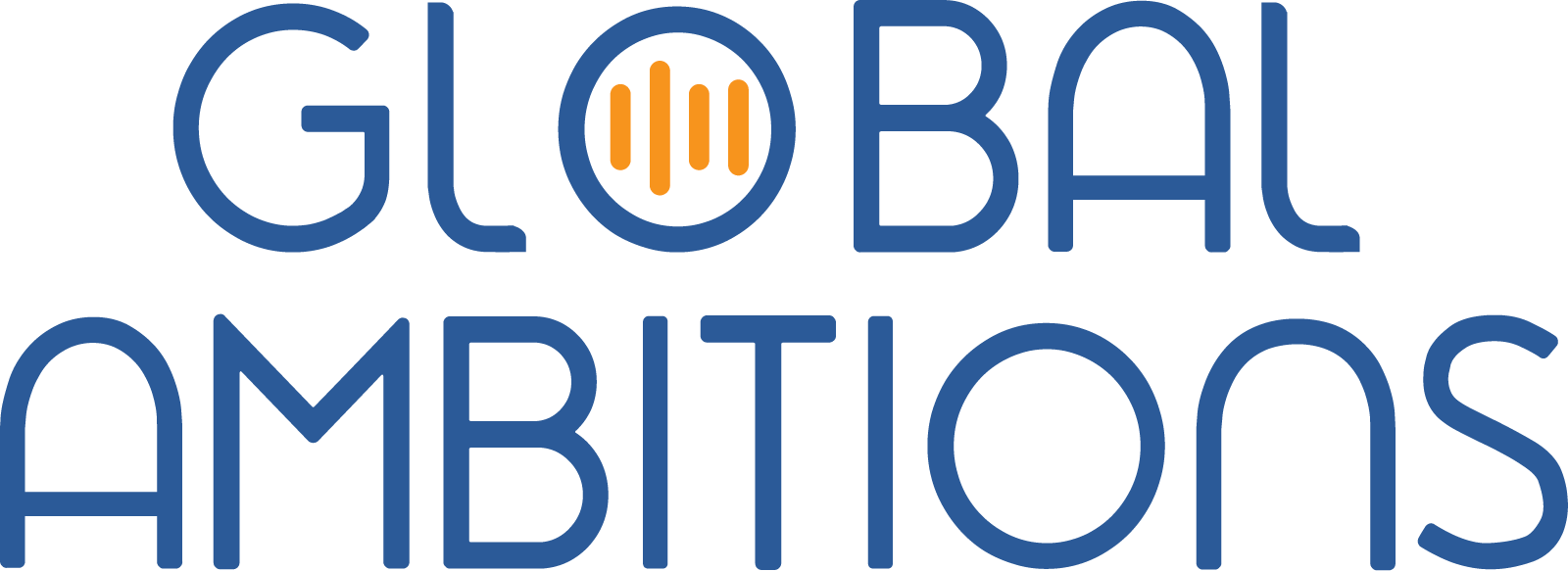Episode 12 with Tarja Karjalainen, Localization Program Manager at Oura
Below is a full transcript of the episode.
Antoine Rey 0:24
Hi everyone, I’m Antoine Rey and I will be your host today for this global ambition podcast. My guest today is Tarja Karjalainen and Tarja is the Localization Program Manager at Oura. Today, our topic is going to be about user experience and customer experience. Tarja, welcome to the program.
Tarja Karjalainen 0:43
Hi Antoine, thanks for having me, lovely to be here.
Antoine Rey 0:46
Usually, Tarja, localization managers, come into a new startup and a new organization, and they have to do localization and internationalization. In your case, there’s a whole other dimension around, user experience is that right? Can you tell us maybe a bit more about that approach that you have?
Tarja Karjalainen 1:06
Absolutely. I was lucky enough to come into a company where internationalization was already pretty established. I didn’t have to do a lot of work on that. So we’ve already had, like engineers, done a tremendous job on getting the products internationalized, and really I could dive into kind of my… what I’m really most excited about localization. This UX user experience and customer experience aspect of localization. Basically, localization is user experience. I mean, there is no difference between the two.
Tarja Karjalainen 1:38
You are, as a localization manager, you are building an experience for the International user. So to me, those things are quite similar. So yeah, we have a very content-heavy app. We are trying to explain this kind of scientific physiological terminology and phenomenon to our users in a way that’s easily understood and actionable, that the users can relate to. So obviously, translating and localizing that into different languages is definitely a challenge
Antoine Rey 2:11
Tell me maybe how do we differentiate user experience versus the customer experience? Is there a difference? Is that the same thing?
Tarja Karjalainen 2:19
That’s a really good question. To me at least, I mean, when I think about UX and CX user experience is when your users are using your product, let’s say, in our case, the app the user. User experiences are what they see when they are using the app.
Tarja Karjalainen 2:36
CX is something that goes beyond that. So the CX covers when the user is actually considering that they will buy the ring. It’s what happens when they go to the website and what happens when they go through that user journey of buying and receiving the ring, and taking the ring to use for the first time, installing the app, and then potentially at the end of the user journey discontinuing the use of the product. So kind of, CX is the whole customer journey from when the customer actually doesn’t even necessarily know that they want to buy a ring to the point of when they no longer use the ring. Whereas, user experience is more focused on the UI and the actual product, use.
Antoine Rey 3:19
So in this case, you’ve mentioned that you have a specific terminology that you use for the product which is quite content heavy. So can you tell us maybe some of the challenges or the issues that you may have come across when you tackled that aspect of the program?
Tarja Karjalainen 3:36
Yeah, I mean, you know, we all… localization managers usually are accustomed to doing things in a certain way. I definitely have been doing this for years. I have this kind of mental tick-off, you know, that I’m following. This is what I do first, this is what I do then, and this is how it works. And this is what I, again, started out doing. And realized that it didn’t work this time. And this was an interesting learning for me as well.
Tarja Karjalainen 4:01
Sometimes the things that you’ve learned to don’t necessarily work in all contexts. And as an example of what I started off doing, you know, I separated the terminology from the app, the key terminology, and then I localized that first so that we can actually then, in the translation phase, insert those pre-thought out and localized terms into the content. But this time the content of our app was so unique in a way that this workflow didn’t work. We ended up with a version where the terminology didn’t feel right. It didn’t fit into the tonality of the of the text and we really had to take another turn and see how to make that more relatable.
Tarja Karjalainen 4:43
So, then what we ended up doing is listening to our customers, listening to our users. And we ended up sending out a survey to the users in these markets that we were localizing into and creating a few screens that were localized in a different way with different wordings and with different tonalities. And then asked our users to tell us which sounds more like Oura, what sounds relatable to them.
Tarja Karjalainen 3:39
And then from that exercise, we were able to kind of create then the tonality and the terminology that felt right for our users as well. I mean obviously, there are always terminology and physiological terminology that you cannot reinvent. You cannot reinvent heart rate variability into whatever you want. But obviously, there’s a lot of terminologies that we were then able to kind of make sound more relatable and more like Oura.
Antoine Rey 5:35
I presume there are some human and physical aspects that are universal, enough in this case.
Tarja Karjalainen 5:44
Yeah, we tend to sleep the same way.
Antoine Rey 5:48
Whether you’re Asian or American or European, you know, that’s the same thing. And so like I like the idea of having the user research where you really involving the users from the get-go in this case.
Tarja Karjalainen 6:00
Yeah, I think that that’s one of the most effective, and I might add fun, way of doing localization. I mean, obviously when you have a product and you already have a product-market fit specific market, and you already have a user base in that market and that is a really good resource to tap into. I mean who is better to tell you what they want the product to sound like than the people who are actually already using it in their native language.
Tarja Karjalainen 6:27
So that’s, I think that that’s something that definitely we will be continuing doing. Listening to our users and getting their feedback. Because this is… our product is such that we kind of follow everyone’s life almost. It’s, for many users, it’s the first thing that, for me as well, it’s the first thing you look at in the morning and the last thing you look at in the evening. So, you know, it’s kind of a companion so it needs to speak to you in a way that feels natural to you in all languages.
Antoine Rey 6:56
You feel then Tarja that working with your engineering team and the UX team that you have to evangelize with them for designing with a global mindset in mind, or is that already ingrained in those teams?
Tarja Karjalainen 7:12
I think today in our very global company, we have offices in the US and in Finland and we have a lot of different nationalities working for us, there is already a kind of global mindset in our company. That, of course, helps. But obviously, you have to evangelize it. So it’s important for a localization manager’s job to evangelize these things. And, you know, if you’re not working in localization, you don’t necessarily think about all the little things that apply to design for global users.
Tarja Karjalainen 7:41
But yes, that’s one of the most exciting things, I think, you know, being able to look at the designs from the global users perspective and saying that hey, maybe this could be slightly different, you know, let’s consider that this language is a lot longer in this patterns or let’s consider how this coloring might be interpreted in some cultures. So definitely that’s, to me, always been the most interesting part of localization. Getting involved in the UX and the experiences that we design.
Antoine Rey 8:12
So, this is great. So some challenge with the terminology that you can address by involving the user in your user research, you know, and that turns into a success. Other maybe experience and successes that you’ve experienced with the UX team in the design of this product for international markets that you can share with the audience here?
Tarja Karjalainen 8:32
You know, one of the successes is that we’ve been getting a lot of really nice feedback from our customers you know from this exercise of listening to our customers, we were able to create a tonality that really worked, and is familiar to our user so that was a big success in terms of getting that right.
Antoine Rey 8:50
How are you measuring the success, then? Once you’ve engaged with that audience, you can sense that the terminology is right. But then, do you have a way to measure the success of the product in adoption from a UX perspective?
Tarja Karjalainen 9:05
One of the things that I look at most, is customer feedback, or user feedback. And really, one of the metrics that we follow when considering was the language, adding a language to the app successful or not, is the ratings that we get. Obviously, the feedback that we get from the users. So you know we’ve been getting a lot of good feedback on the language releases that we did.
Tarja Karjalainen 9:26
You know, our customers might send us messages. “I really love the app now that it’s in this language” and really, those are the things that I really look at the most. Obviously, the app ratings, when you’re developing an app, that’s one of the things that you follow most that gives you an idea. But also we do see this in retention. You know, all of that data, user data, you can follow to see, we’ve been getting a lot of new users. I think that the most important thing in terms of success for adding a language we look at the reviews of the app.
Tarja Karjalainen 9:59
So that gives you a really good idea of how that language is performing. For instance, we have a lot of requests for different languages. I mean we cannot fulfill all of them at once but you know, when you’re adding a language, especially one that has been requested a lot by the users in the ratings and in the feedback that we get. It’s really rewarding when you see the rating go up, because we, for instance, get a lot of free feedback on, you know, if this app was in this language we would give it five stars. And then when you see that happening after you release that language I think that that’s a really good metric for customer success and happiness.
Antoine Rey 10:34
And in your case, there’s a direct correlation I suppose because you have a product, as well as an app and they work hand in hand, so the users have to buy the product to use the app.
Tarja Karjalainen 10:44
Yes, yeah.
Antoine Rey 10:45
So it looks like you have a product that has been really designed with a global mindset to start with, and therefore, you know, the experience from country to country seems to be quite positive and you’re getting the feedback from there. So what’s the next step for the UX design or the localization team? What are you going to be concentrating on over the next few months?
Tarja Karjalainen 11:09
So as we’re designing new content for the app we want to make sure that it’s something that is relevant in all of our markets, all of our users so that we are actually designing content that our users want to be using no matter where they are in the world.
Antoine Rey 11:25
That’s great. Well, they’re very lucky to have someone like you in the organization working closely with people that are receptive to a global mindset in the UX team so that’s fantastic. Tarja, we’ve had a great experience here talking about UX and customer experiences. Thanks very much for your participation. This is great. And we’ll talk to you soon I’m sure again.
Tarja Karjalainen 12:14
Thank you so much, Antoine. It was my pleasure.

Tarja Karjalainen
Localization Program Manager at Oura




